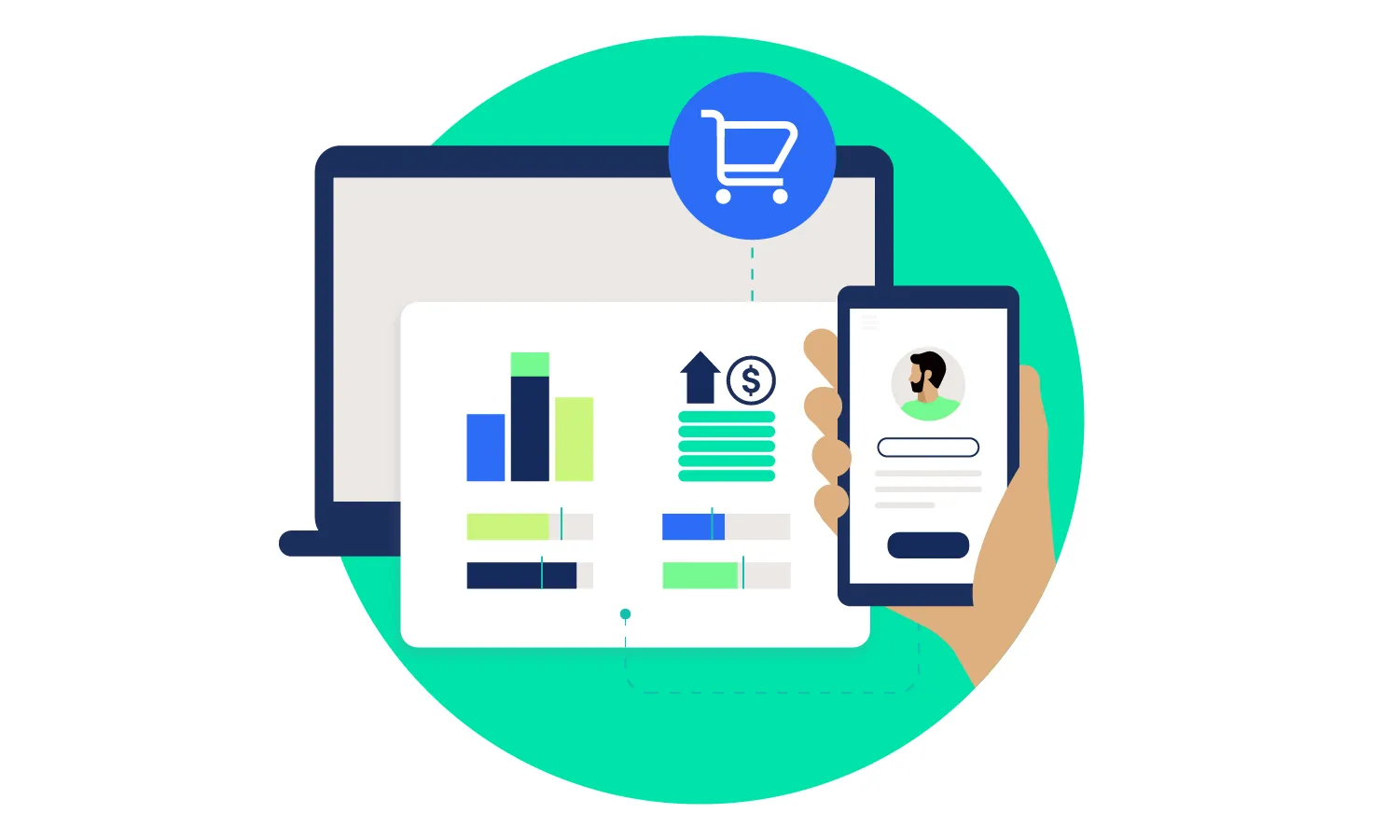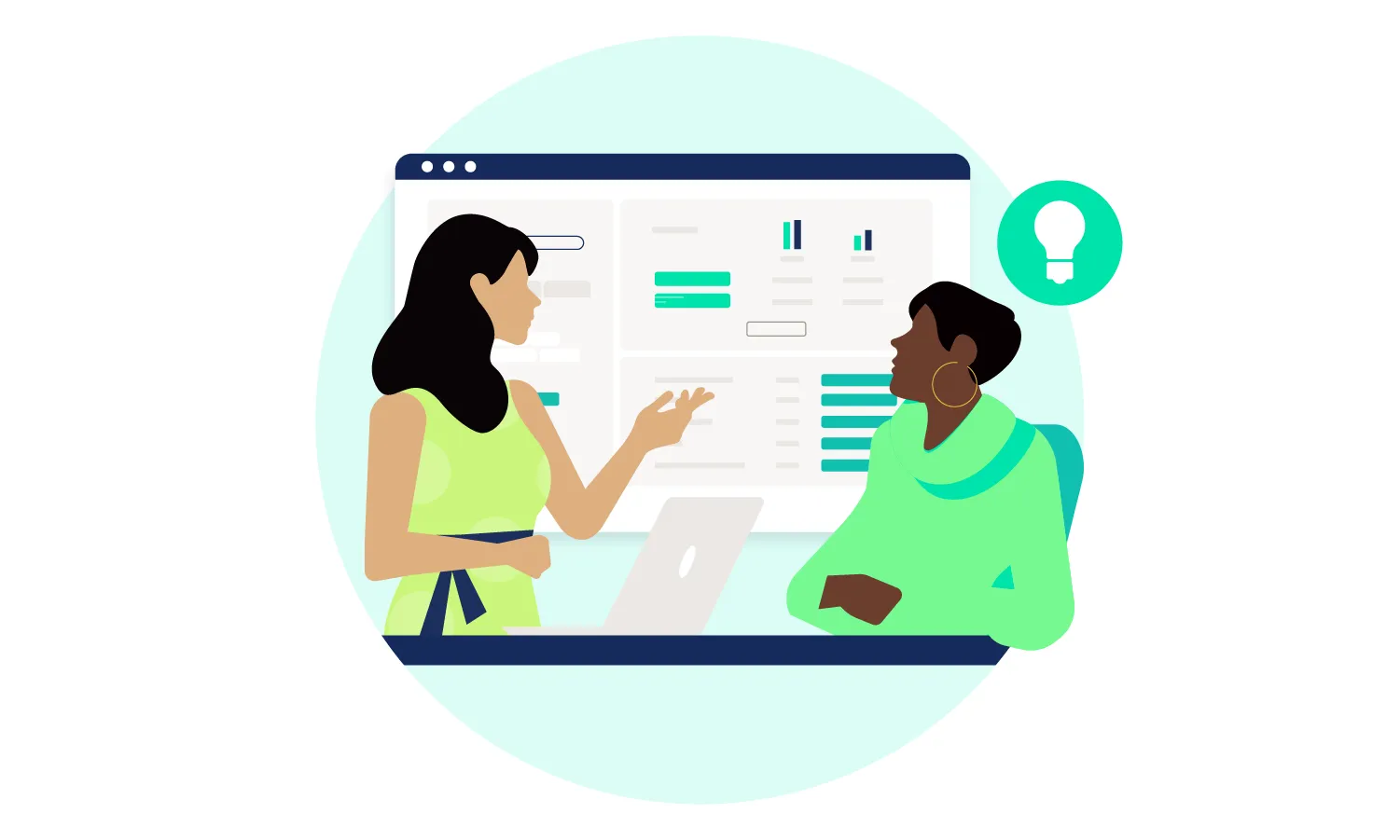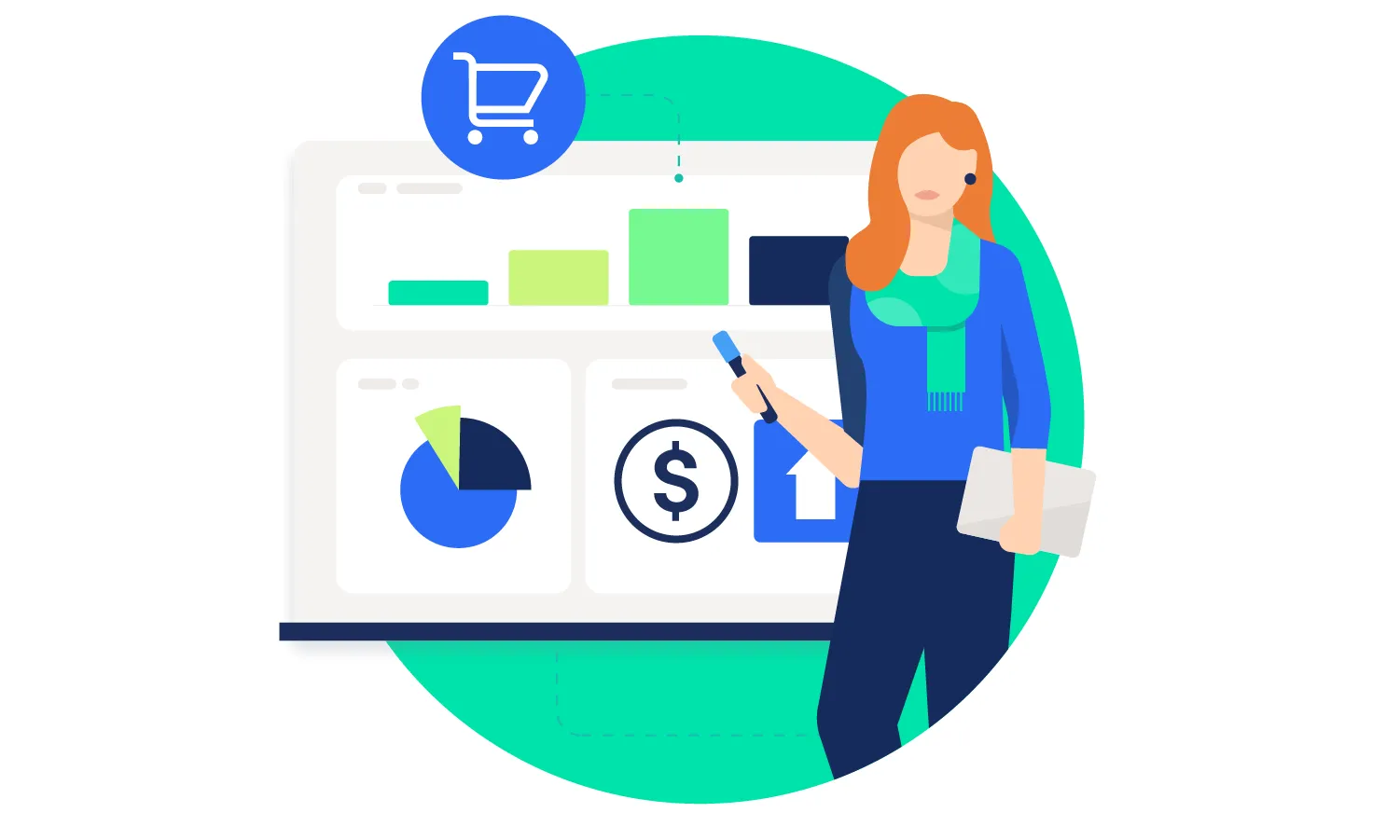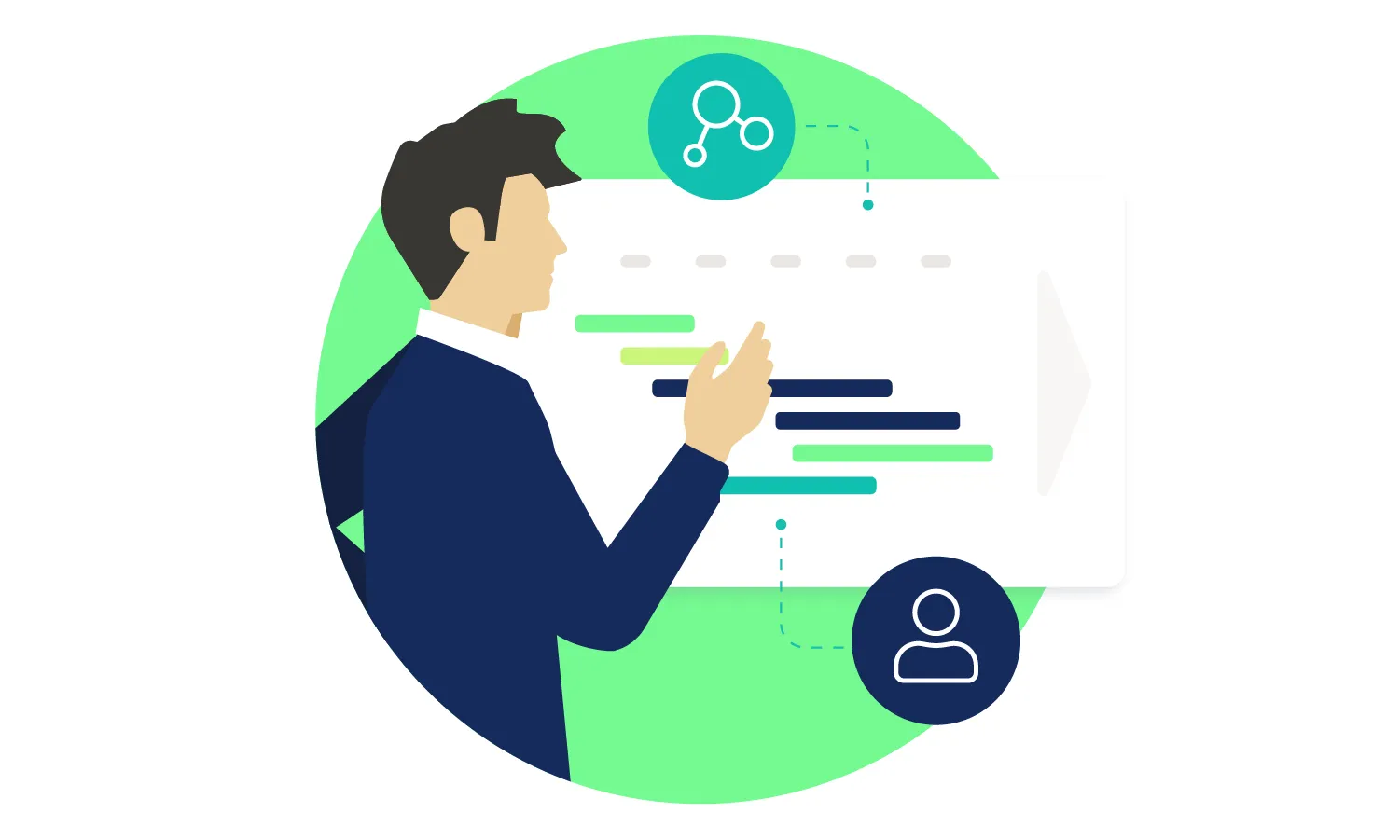March 11, 2021
Playbook: How to build a business case for a CDP
Customer Data Platforms (CDPs) are the rising stars of the martech world, empowering businesses with an enriched single view of the customer, targeted segmentation, and powerful cross-channel activation. Here’s our step-by-step guide for building an effective CDP business case that will resonate with executives.

The CDP industry has seen explosive growth over the past few years, driven by an increase in digital, data-driven, and customer-first strategies across every business function.
Serving as your all-in-one hub for insight-driven marketing, sales, and service, a CDP like Lexer helps you genuinely understand customers and engage them with the experiences they deserve.
A CDP might seem like a no-brainer for you, but not everyone in your business will immediately understand the capabilities and impact you’ll gain by adopting one. Creating a business case can help you connect the dots between a CDP and its benefits for other stakeholders in your company.
Your business case needs to be clear, specific, and comprehensive. It needs to:
- Identify the problem you’re trying to solve.
- Educate the executive team on what a CDP is.
- Demonstrate how a CDP will help solve the problem.
- Establish clear goals and KPIs.
- Propose a budget and delineate the ways in which the money will be spent.
- Outline timelines, resources needed, and responsible parties.
Additionally, your business case serves as an opportunity to solidify your goals and plans ahead of time and ensure as smooth an implementation process as possible. The sooner you lay the groundwork for an effective CDP implementation, the sooner you can begin driving value.
Our playbook guides you through these steps and components required for a successful CDP business case.
How to build a business case for a CDP
1. Identify the problem or pain point you’re trying to solve.

As the saying goes, “if it ain’t broke, don’t fix it.”
Your leadership team will be hard-pressed to invest in a new software just because it’s the latest industry hype, so the first question you need to answer in your business case is, “what’s broken that a CDP could fix?”
A CDP like Lexer, which has native tools to support every team and customer touchpoint, could solve multiple problems across the business—so be specific about the issues you’re experiencing that point to the need for a CDP.
For example, many businesses invest in a CDP when they realize that their disparate databases are causing disjointed customer experiences.
Because today’s consumers expect seamless, personalized experiences across every channel and touchpoint, businesses need to be able to track and enhance engagement across every channel and touchpoint as well. But all too often, customer data is scattered across disconnected tools, processes regarding data management are highly inefficient, and siloed teams struggle to communicate effectively.
These data challenges have a direct impact on the customer experience, leading to miscommunication between teams, irrelevant or duplicated marketing messages, ineffective service delivery, and general customer dissatisfaction, eroding brand loyalty and trust.
Here are some other common problems solved by a CDP:
- Technical: Siloed, raw data is difficult to combine, understand, and translate into actionable insights.
- Cost: Investing in analytics teams and a mass of point solutions is expensive.
- People: Without easy access to actionable insights, your team becomes frustrated and struggles to effectively engage customers.
- Agility: Slow data and systems mean you’re missing opportunities to engage customers and innovate within the business.
- Customer Experience: You’re struggling to provide relevant, engaging experiences for your customers.
When identifying the problem you’re trying to solve, be sure to examine it from multiple angles and discuss the ways in which it affects your teams, your processes, your results, your brand, and especially your customers.
2. Educate the leadership team on what a CDP is.

Once you’ve identified the problem you’re trying to solve and concluded that a CDP is the right tool to fix it, you need to ensure the leadership team is up to speed on what a CDP is, how it functions, and why it will help.
The CDP Institute defines a CDP as a “packaged software that creates a persistent, unified customer database that is accessible to other systems.”
In other words, a CDP combines data from multiple sources, cleanses and transforms that data into a consistent format, links it to individual customer profiles, and integrates with other retail systems for audience activation across channels. Acting as the single source of truth for all of your customer data, a CDP helps businesses maximize the use of their data across teams and channels.
With hundreds of CDP vendors on the market, it’s important to note that not every vendor has the same strengths and capabilities. As explained in this Boston Consulting Group article on one-to-one personalization with a CDP, some vendors have a core data management focus, while others are focused more on insights and activation. The right CDP for your business will depend on the specific problems you’re trying to solve, as well as the current needs and capabilities of your team.
3. Explain why a CDP will help you solve the problem or pain point.

After educating the leadership team on what a CDP is and how potential vendors differ, you need to demonstrate the value and expected outcomes of the investment. Connect each benefit or use case back to the problem you’re trying to solve.
In particular, be sure to cover:
- The benefits for marketing, sales, and service: When every team has access to the same information within the same platform, everyone has the ability to orchestrate seamless, informed, personalized customer experiences at every touchpoint. Cross-functional collaboration becomes easier, insight-driven engagement strategies are put in place, and customer satisfaction is increased.
- The benefits for operational efficiency and data management: Combining and enriching your data into a single customer view within an easy-to-use CDP creates a number of operational efficiencies. IT teams can shift their focus from low-value list queries to more sophisticated analytics, marketers can reduce manual tasks in favor of more strategic priorities, and service team members can respond to tickets more quickly and effectively.
- The benefits for real-time decision making and analytics: With the ability to self-serve insights, automate campaign activations, and track performance in real time, you can make quicker, smarter decisions. This ability to test, learn, and adapt to change will help you boost your agility in an ever-evolving market.
- Any vendor-specific benefits: Some vendors offer unique benefits—such as a focus in your industry, support and training, or low-touch deployment processes—that set them apart from other options. Click here to learn the 15 unique benefits that set Lexer apart from other vendors on the market.
To paint a holistic picture of the value of a CDP, discuss both qualitative benefits (such as customer-centric transformation and enhanced customer experiences) and quantitative benefits (such as revenue growth and cost savings).
4. Establish clear goals and KPIs.

Once you’ve established the value of a CDP, from customer-led innovation to revenue gains, delineate your goals and present a plan for tracking your progress toward those goals.
The specific goals and objectives for a CDP investment will vary from business to business, but you might break them down like this, for example:
- Transformation: With a better understanding of our customers’ attitudes, preferences, and behaviors, you can drive customer-led innovation and cultural change throughout your business.
- Revenue: Insight-driven, omnichannel customer engagement leads to high-quality acquisition, growth in lifetime value and improved customer retention.
- Cost: As the all-in-one hub for insights, activation, and automation, a CDP drives significant operational efficiencies, reduces wasteful ad spend, and frees up team bandwidth for higher-value activities.
- Experience: By using a CDP to genuinely understand customers, you can personalize your communications and streamline service to provide a better overall experience.
Notice that each of these goals is directly mapped to a feature or capability within a CDP. By clearly connecting your business goals to the ways in which a CDP supports those goals, you make your case as easy as possible to understand.
Because you can’t improve what you can’t measure, you must include the KPIs and performance metrics you plan to use to understand the CDP’s impact on these goals. Important metrics include:
- Return on investment (ROI)
- Customer lifetime value (CLV)
- Net Promoter Survey (NPS) scores
- Ticket volume
- Customer profitability
… and more. For a more detailed look at the expected outcomes and KPIs for measuring the impact of your CDP, click here.
5. Propose a budget and outline where/how the money will be allocated.

At this point in your proposal, you need to estimate how much budget will be required to implement the CDP, how many hours of internal work the implementation will require, and how you expect the money, time, and labor to be allocated.
As you’re researching pricing for different CDP vendors, be sure to look out for hidden costs and fees that can throw off your budget after you’ve signed the contract. Many vendors have complex pricing models that limit your usage of the platform or rack up unexpected fees as you grow.
Lexer, however, has a fixed, no-surprises pricing model which is always scoped to be used by unlimited users; this transparency ensures that the CDP investment is well within your budget before you bring your proposal to the C-suite.
6. Outline timelines, resources needed, and responsible parties.

Next, outline what you can expect from a CDP post-deployment. How long will it take to be fully onboarded onto the platform? Which quick wins will you see within the first three months? What kinds of results can you expect within the first year? Who will be responsible for using and managing the platform?
Here’s an example of the post-implementation timeline for a CDP vendor like Lexer:
- 3 months post-implementation: Expect an enriched single customer view, deep insights into the underlying drivers of sales performance, an insight-driven strategy for acquisition and retention, and the first campaigns in the market on paid and owned channels.
- 6 months post-implementation: Expect highly targeted marketing, self-served customer insights, personalized campaigns, reduced costs-per-acquisition (CPA), higher returns-on-ad spend (ROAS), reduced media waste, and increased operational efficiencies.
- 12 months post-implementation: Expect richly-detailed customer personas and differentiated products and services tailored to those customers, as well as more agile processes, cost-saving initiatives, CLV growth, and increased campaign and audience volume.
- 24 months post-implementation: Expect the entire company to be more creative and adventurous with your customer data, capturing additional information from customers earlier on in the engagement to offer differentiated experiences. At this point, automation and second-party data exchange will become critical components of innovation and development.
This section is a good place to indicate the amount of time and effort the implementation process will require by your team. Vendors with poor onboarding and implementation processes can become major headaches for your IT team, pushing out deadlines, racking up costs, and causing missed opportunities along the way. Not with Lexer—our implementation process stands out as one of the fastest and easiest in the industry. Click here to read a customer story describing the smooth Lexer onboarding and implementation.
By choosing a vendor with a simple, low-touch implementation, you can save those costs and reallocate them to higher-value line items in your budget. The quicker the time-to-value of the CDP, the more attractive the business case will look to the executive team.
7. Post-implementation, continue to track your performance against your pre-set KPIs.

As with any significant investment, you’ll want to continuously track your performance to make sure you’re hitting the goals and milestones you set ahead of time. We include this step in the case-building process because monitoring and optimizing the performance of your CDP will help you continue to justify the investment year after year.
Lexer’s new measurement and reporting dashboard, Track, will streamline this monitoring and optimization process. Consolidated data, omnichannel reporting on specific customer segments, robust and flexible dashboards, and the ability to spot and respond to trends as they occur provides greater insight and improved outcomes. Every team is empowered to optimize campaigns and demonstrate the impact of their activities to the C-suite.
The best CDP business case begins with the right vendor
No matter how hard you work on building the business case for a CDP, the investment won’t be worth it if you haven’t carefully considered each vendor and chosen the right CDP for your business.
The biggest reason that CDPs fail to live up to their expectations is that those who adopt the CDP don’t have the soft skills, domain knowledge, and expertise to use the platform effectively. In order to reap true value from a CDP, the tool itself needs to be augmented with training, education, and strategic support.
That’s why Lexer offers guidance and support to all of our CDP customers. Our onboarding, implementation, and strategic consulting services will help your team adapt to the ever-evolving retail world, level up your analytics maturity, and fill any gaps in your team’s resources to ensure a smooth, successful CDP adoption.
Interested in deepening customer loyalty and driving profitable growth with the Lexer CDP? Use the calendar below to book a demo and learn more.
Speak with our retail experts

